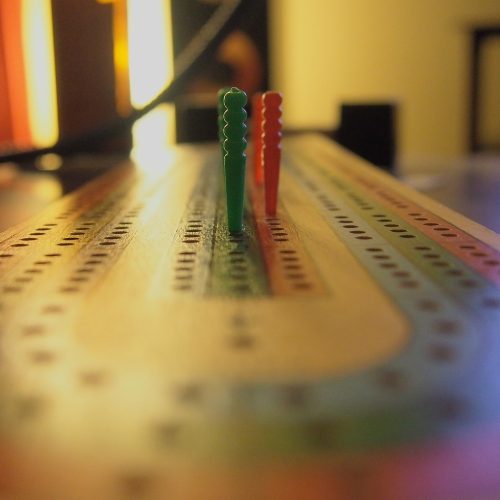With wall-to-wall sports on televisions and immersive video games on consoles, it’s fair to say that our entertainment experiences in the 21st century differ from those in the 17th century. Nevertheless, there may be more similarities than you’d imagine, as many of our favorite card games and sports have roots in the 1600s. Cribbage, blackjack, cricket and lacrosse all developed in the 17th century.
Some Things Never Change
Many activities don’t change much over the years, particularly those with simple rules. Take the humble crossword, first published by the New York World in 1913 courtesy of Arthur Wynne. Not much has changed since his first puzzle. The only major innovation in a hundred years has been this crossword puzzle’s transition from newspapers to the internet. The same is true for other crosswords, such as the popular New York Times puzzle.
The switch is unsurprising, especially considering the research from Statista on the prevalence of online gaming across the US. It’s clear that broadband connections have changed the way we look for mental stimulation, but that doesn’t mean that gaming and sporting practices from the 17th century no longer exist. It is remarkable that our interpretations of games and sports do not differ so greatly from those of our 17th-century peers.
Cribbage

Image source: Pixabay.com
Cribbage is a distinctive card game that combines the playing of hands with the movement of pegs around a board. The game’s rules can seem unusual for players familiar with more traditional puzzle games. Poker players might recognize certain elements, such as the ability to score points by achieving flushes and pairs.
There’s nothing quite like cribbage today. This wasn’t the case in the 17th century, as cribbage’s invention is purported to be the result of experimentation with another card game, known as “noddy.” Cribbage’s lasting popularity is largely due to the mainstream production of cribbage sets from companies like Pleasant Times Industries.
Blackjack
Although it wasn’t called blackjack in the 17th century, players enjoyed an activity that closely resembles the beloved card game. The first written reference to blackjack was provided by “Don Quixote” author Miguel de Cervantes. In a 1602 short story, “Rinconete y Cortadillo,” Cervantes wrote of a game called veintiuna (Spanish for “twenty-one”). A modern blackjack player faces the same core objective as Cervantes’ 17th-century characters: try to make 21, but don’t go over it!
As evidenced by the many guides for sale on Amazon, blackjack strategy has become more complex over the years. However, even when new variations appeared as blackjack migrated online, the underlying principle of aiming for 21 remained the same. There are several online variations of blackjack at Betway and other major platforms, which utilize different numbers of decks and enforce their own rules about splitting and doubling down. Whether you’re playing European Blackjack, Spanish Blackjack, or Atlantic City Blackjack, 21 is the magic number – just as it was in the 1600s.
Cricket

Image source: Pixabay.com
Cricket is North America’s fastest-growing sport, but it will take something special for it to overtake baseball, given baseball’s cultural hold on Americans. Maybe cricket will need another century or two before it becomes a common sight on American fields, although figures cited by The Guardian in 2019 indicate that around 200,000 people participate in grassroots cricket in the US.
While earlier iterations of sports resembling cricket have been recorded, it was in 17th-century Britain that amateur and professional cricket teams developed. Not all aspects of the sport in the 1600s would be familiar to fans watching cricket on ESPN, as underarm bowling and a bat shaped like a hockey stick are two notable alterations from the original game.
Lacrosse
Lacrosse is another ball-and-stick sport that rose to prominence in the 17th century, when a French missionary witnessed a Native American community playing the game in modern-day Ontario. This missionary, Jean de Brébeuf, named the sport “la crosse,” which translates from French to “the stick.”
Lacrosse matches were a part of symbolic rituals, could last for three days, and featured as many as 1000 players in some cases. Jesuit missionaries in the 17th century gave the sport its modern name and laid the foundations for its popularity today; in 2018, US Lacrosse served around 450,000 members. Lacrosse should be remembered as a product of Native American communities.
While the 17th century was pivotal for the documentation of lacrosse, the sport had been around since the 1100s – that makes cribbage, blackjack, and cricket look like relatively newfangled innovations! Despite continued technological developments, it is remarkable how people continue to turn to these centuries-old activities for engagement.








